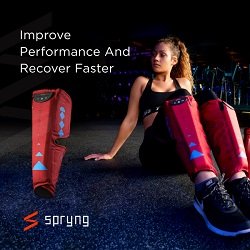Introduction to Hoverboards
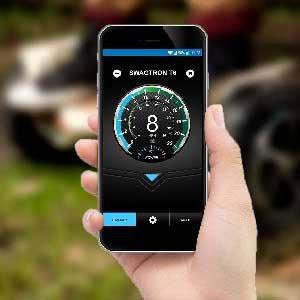 Hoverboards with GPS Navigation – Hoverboards have evolved significantly since their inception, transforming from futuristic concepts to tangible, everyday devices. Initially, hoverboards were often considered to be merely a fantasy depicted in science fiction films. However, advancements in technology have turned these dreams into reality. In essence, a hoverboard is a self-balancing scooter that enables users to travel short distances effortlessly. It relies on a combination of gyroscopes, accelerometers, and microprocessors to maintain balance and ensure a smooth ride.
Hoverboards with GPS Navigation – Hoverboards have evolved significantly since their inception, transforming from futuristic concepts to tangible, everyday devices. Initially, hoverboards were often considered to be merely a fantasy depicted in science fiction films. However, advancements in technology have turned these dreams into reality. In essence, a hoverboard is a self-balancing scooter that enables users to travel short distances effortlessly. It relies on a combination of gyroscopes, accelerometers, and microprocessors to maintain balance and ensure a smooth ride.
Historically, the concept of hoverboards gained substantial popularity when the first prototypes were introduced around 2013. These early models were relatively basic, primarily powered by lithium-ion batteries and equipped with simple motors. As technology progressed, so did the functionalities and designs of hoverboards. They started featuring more robust components, enhanced battery life, and improved safety measures, making them more reliable and user-friendly.
The evolution of hoverboards has been marked by several key milestones. One pivotal moment was the introduction of the haloboard, which set new standards in terms of performance and aesthetics. Haloboards are known for their superior build quality, advanced mechanics, and sleek design. They have redefined personal transportation by integrating cutting-edge technology such as Bluetooth connectivity and mobile apps, enabling users to monitor their rides and customize their experience. In recent years, the inclusion of GPS navigation in hoverboards has positioned them as a modern solution for last-mile transport in urban areas.
Hoverboards have rapidly gained popularity due to their ease of use, environmental benefits, and the sheer fun they offer. They provide a convenient and efficient way to navigate through congested cities, reducing the dependency on traditional modes of transport. As we march towards an era of smart cities and sustainable living, the role of advanced hoverboards like the haloboard in personal transportation is only expected to grow.
How GPS Navigation Enhanced Hoverboards
The integration of GPS navigation into hoverboards has significantly revolutionized their functionality, taking these devices from mere recreational gadgets to advanced personal transportation solutions. At the core of this transformation lies the GPS technology, a satellite-based navigation system that provides users with real-time location tracking and precise route planning.
GPS, or Global Positioning System, operates through a network of satellites that orbit the Earth. These satellites transmit signals that enable GPS receivers to determine their exact location by triangulating positions from multiple satellites. When embedded in a haloboard, GPS technology allows the device to understand its geographical location with high accuracy, offering users a range of enhanced navigational capabilities.
By incorporating GPS navigation, modern haloboards can offer real-time location tracking. This feature enables riders to know their exact position at any given moment, which is particularly beneficial in urban environments. Whether navigating through crowded streets or exploring new areas, users can easily monitor their progress and ensure they are on the right path.
Furthermore, GPS-equipped haloboards provide sophisticated route-planning options. Riders can input their desired destinations and receive step-by-step directions, optimizing their travel routes to avoid congestion, road closures, and other obstacles. This ensures a more efficient and enjoyable riding experience, reducing travel time and enhancing safety.
Another advantage of GPS navigation in haloboards is the added layer of security. Should a device be lost or stolen, the GPS tracker can assist in locating and recovering the hoverboard. This feature gives users peace of mind and protects their investment in advanced personal transportation technology.
In essence, the marriage of GPS technology and hoverboards represents a significant leap forward in the realm of personal transportation. By providing precise location tracking, detailed route planning, and additional security measures, GPS-enhanced haloboards stand poised to redefine how we navigate our world.

Key Features of Hoverboards with GPS
Hoverboards equipped with GPS technology render an array of innovative features that significantly enhance the user experience and reimagine personal transportation. Among the pivotal functionalities is real-time navigation. This feature empowers users to traverse unfamiliar routes with ease, offering turn-by-turn directions akin to those found in modern smartphones. With haloboard’s advanced navigation systems, riders can confidently explore new areas without the fear of getting lost.
Route optimization stands as another integral feature. By leveraging sophisticated algorithms, these hoverboards analyze current traffic conditions, suggest the most efficient paths, and thereby minimize travel time. This optimization not only facilitates speedier commutes but also contributes to energy conservation, maximizing battery longevity for extended rides.
Location tracking is another cornerstone of GPS-enabled hoverboards. This functionality allows users to share their real-time location with friends and family, ensuring peace of mind and enhanced safety. Whether navigating through city streets or exploring expansive parks, this continuous tracking feature keeps everyone informed of the rider’s whereabouts.
Geofencing is also a noteworthy element embedded in these sophisticated haloboards. Through the creation of virtual boundaries, users can set predefined zones for their riding territories. If a rider inadvertently crosses these boundaries, instant alerts are triggered, thus adding an extra layer of security. This is particularly beneficial for parents monitoring younger riders or for institutions regulating hoverboard usage within specific areas.
Safety alerts—another vital aspect—complement the aforementioned features. These timely notifications, including warnings about high speeds, low battery levels, or potential hazards, are designed to protect the rider. Enhanced by the GPS integration, these alerts provide a comprehensive approach to risk mitigation and ensure a safer riding experience.
In essence, the integration of GPS technology in hoverboards ushers in a transformative era for personal transportation. Real-time navigation, route optimization, location tracking, geofencing, and safety alerts collectively redefine convenience and safety, marking a significant leap forward for the next generation of haloboards.
Benefits of Using GPS-Enabled Hoverboards
 In the realm of personal transportation, the introduction of GPS-enabled hoverboards marks a significant advancement. These innovative haloboards are not only exhilarating to ride but also offer a plethora of benefits that enhance the overall commuting experience. One of the core advantages is the augmented safety features they provide. With integrated GPS navigation, riders can receive real-time location tracking and route guidance, reducing the risk of getting lost and enabling them to traverse unfamiliar routes with confidence.
In the realm of personal transportation, the introduction of GPS-enabled hoverboards marks a significant advancement. These innovative haloboards are not only exhilarating to ride but also offer a plethora of benefits that enhance the overall commuting experience. One of the core advantages is the augmented safety features they provide. With integrated GPS navigation, riders can receive real-time location tracking and route guidance, reducing the risk of getting lost and enabling them to traverse unfamiliar routes with confidence.
Another critical benefit lies in better route management. GPS-enabled hoverboards facilitate optimized pathfinding, ensuring that riders can select the most efficient routes to their destinations. This is particularly advantageous in urban environments where traffic congestion and road blockages can be unpredictable. The ability to avoid such obstacles not only makes travel faster but also reduces unnecessary delays and stress, thus ensuring a smooth and enjoyable journey.
Reduced travel time is a substantial benefit provided by the smart navigation capabilities of GPS-equipped haloboards. By dynamically adjusting routes based on real-time traffic conditions, riders can shave precious minutes off their commute. This is especially valuable for daily commuters who need to adhere to tight schedules, making these hoverboards an excellent tool for time management.
The convenience factor of GPS-enabled hoverboards cannot be overstated. Whether for leisure, commuting, or urban exploration, the ease of navigation greatly improves user experience. For those exploring new areas, GPS can highlight points of interest and suggest scenic routes that might otherwise go unnoticed. This feature transforms a simple ride into a rich, interactive experience, elevating the pleasure of urban discovery. Additionally, for commuters, it ensures that reaching work or any destination becomes a hassle-free endeavor.
In essence, the integration of GPS navigation into hoverboards epitomizes a seamless blend of technology and everyday utility, offering a robust solution to modern transportation needs.
Popular Models of GPS-Enabled Hoverboards
As the market for personal transportation evolves, several GPS-enabled hoverboards have garnered popularity among users. Among the top brands, the Halo Board stands out for its innovative features and user-friendly interface.
- The Halo Board Beast offers an advanced GPS navigation system integrated seamlessly with other high-end specifications. This model is highly rated for its 3200-watt dual hub motors, providing speeds up to 26 miles per hour and a range of 25 miles on a single charge. Users have praised the smooth ride and easy maneuverability, highlighting the convenience of tracking their routes via the mobile app.
- Another favorite among consumers is the Swagtron T6. Known for its robust design, the T6 supports weights up to 420 pounds and is equipped with a powerful GPS system. Its rugged 10-inch tires allow for a stable ride across various terrains, from smooth pavements to rough trails. User reviews commend its durability and effective GPS tracking, which has proven useful for long-distance travel.
- The Razor Hovertrax 2.0 is also a notable contender in the GPS-enabled hoverboard segment. This model emphasizes safety and balance technology, making it an excellent choice for beginners. It features a GPS navigation unit that is precise and reliable, and its 350-watt motors provide a top speed of 8 miles per hour. Users often appreciate its sleek design and steady performance, particularly when commuting through urban environments.
- Lastly, the EPIKGO Sport+ is recognized for its speed and power. Equipped with 400-watt dual motors, this hoverboard can attain speeds up to 12 miles per hour and travel up to 10 miles on a single charge. Its GPS functionalities are praised for their accuracy and ease of use, allowing riders to plan their routes efficiently.
Overall, these models cater to various needs, from recreational use to daily commuting, each offering unique features that enhance the riding experience.
User Experience and Testimonials
The advent of GPS-enabled hoverboards has significantly transformed the user experience, making the haloboard a preferred choice among diverse groups of individuals—from daily commuters to hobbyist riders. Personal testimonies have consistently highlighted how the integration of GPS navigation has enhanced the convenience and overall ride quality, offering a seamless and enjoyable journey.
For daily commuters, the GPS capability has proven invaluable. Rachel, a college student who travels a considerable distance to her campus, appreciates how her haloboard has simplified her daily routine. “I used to rely on public transport, which was often unpredictable. With my GPS-enabled hoverboard, I can chart out the quickest route and avoid delays. It saves me so much time and hassle,” she shares.
Similarly, professionals who use the haloboard for their work commutes have found the GPS feature crucial. Jason, who works in a bustling city, notes, “Navigating through the city streets during rush hour was a nightmare. The GPS on my hoverboard helps me find less congested routes, making my commute faster and more efficient. It’s been a game-changer for my punctuality and stress levels.”
Hobbyists and recreational riders have also expressed delight with GPS navigation on their haloboards. Emily, an outdoor enthusiast, loves exploring new terrains. “The GPS feature on my hoverboard allows me to venture into unfamiliar areas with confidence. I no longer worry about getting lost and can fully immerse myself in the adventure,” she enthuses.
Furthermore, long-distance riders have expressed satisfaction with the extended capabilities provided by GPS. Mark, a long-distance enthusiast, explains, “On my long rides, the GPS ensures I stay on course, and I can easily discover new and scenic routes. It enhances the joy of riding tremendously.”
Overall, these testimonials embody the significant enhancement GPS navigation has brought to haloboards. Whether for daily commutes or leisure, the addition of GPS technology has elevated the riding experience, meeting the distinct needs of a wide range of users.
Future Trends and Innovations
 As personal transportation technology advances, the future of hoverboards, particularly those equipped with GPS navigation, looks incredibly promising. One of the most exciting potential upgrades lies in the integration of AI-assisted navigation systems. These systems could offer real-time route adjustments and predictive path planning, enhancing the safety and convenience of navigating urban environments on a haloboard. With AI’s capacity to analyze vast amounts of traffic and environmental data, users could avoid congested areas, roadblocks, and even optimize their routes for the fastest or safest travel.
As personal transportation technology advances, the future of hoverboards, particularly those equipped with GPS navigation, looks incredibly promising. One of the most exciting potential upgrades lies in the integration of AI-assisted navigation systems. These systems could offer real-time route adjustments and predictive path planning, enhancing the safety and convenience of navigating urban environments on a haloboard. With AI’s capacity to analyze vast amounts of traffic and environmental data, users could avoid congested areas, roadblocks, and even optimize their routes for the fastest or safest travel.
Another significant innovation on the horizon is the integration of augmented reality (AR) displays. This feature could project navigation instructions directly onto the rider’s visual field, providing a hands-free and distraction-free guidance system. Riders would be able to see turn-by-turn directions, speed limits, and points of interest, all through an unobtrusive AR interface. This seamless integration of navigation data would create a more immersive and intuitive riding experience.
Furthermore, as cities become smarter and more interconnected, hoverboards could begin interfacing with the broader smart city infrastructure. For instance, real-time communication between haloboards and traffic management systems could further optimize navigation, significantly enhancing efficiency and safety. Such connectivity could enable features like automatic rerouting in case of accidents and dynamic speed adjustments in response to pedestrian density.
Additionally, advancements in battery technology and sustainable energy sources might extend the range and usability of hoverboards considerably. Future models could feature light-weight, high-capacity batteries, allowing riders to travel longer distances on a single charge. Incorporating renewable energy solutions, like solar panels integrated into the hoverboard’s design, could also reduce the environmental footprint.
As these trends and innovations converge, the evolution of the haloboard is set to revolutionize personal transportation, making it more efficient, intelligent, and eco-friendly. The convergence of AI, AR, smart city compatibility, and sustainable energy solutions promises a future where hoverboards become an integral part of a seamlessly connected urban transit ecosystem.
Conclusion and Final Thoughts
In summarizing the key points discussed in this blog, it’s clear that the advent of GPS navigation embedded within hoverboards marks a significant milestone in the personal transportation sector. The integration of such technology into haloboards not only enhances the user experience by providing precise navigation and improving safety but also demonstrates the potential for future advancements in the realm of smart transportation solutions.
The incorporation of GPS capabilities into hoverboards addresses numerous concerns raised by users over navigation and orientation, especially in unfamiliar territories. This shift towards smarter, more intuitive transportation devices emphasizes the industry’s commitment to evolving and meeting the diverse needs of modern users.
Furthermore, the impact of GPS navigation on the hoverboard industry is profound, serving as a catalyst for subsequent innovations that might include AI-driven route optimization, real-time traffic data integration, and enhanced connectivity features. These technology-driven improvements promise to elevate the practicality and convenience of personal transportation devices, making them indispensable tools for urban commuting.
As we look forward, it becomes increasingly important for consumers to stay informed and embrace such technological advancements. Incorporating halo boards with GPS navigation into daily routines not only simplifies travel but also underscores the importance of leveraging cutting-edge solutions for an improved quality of life. Whether for recreational purposes or utilitarian use, these smart hoverboards demonstrate the endless possibilities that await the future of personal transportation.
| Hoverboard Collections | |
|---|---|
 |  |
| Amazon Collections | Walmart Collections |
Related Articles
- Top 5 Hoverboard Models You Can Buy Today!
- Best Hoverboard for Under 200: A Comprehensive Guide
- Hoverboard With Bluetooth Speakers & Lights: The Ultimate Ride
- Best Hoverboard for Adults in 2024
- Halo Board Carbon Edition Review | Ultimate Electric Skateboard



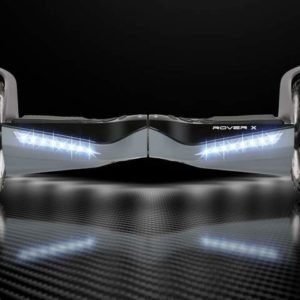
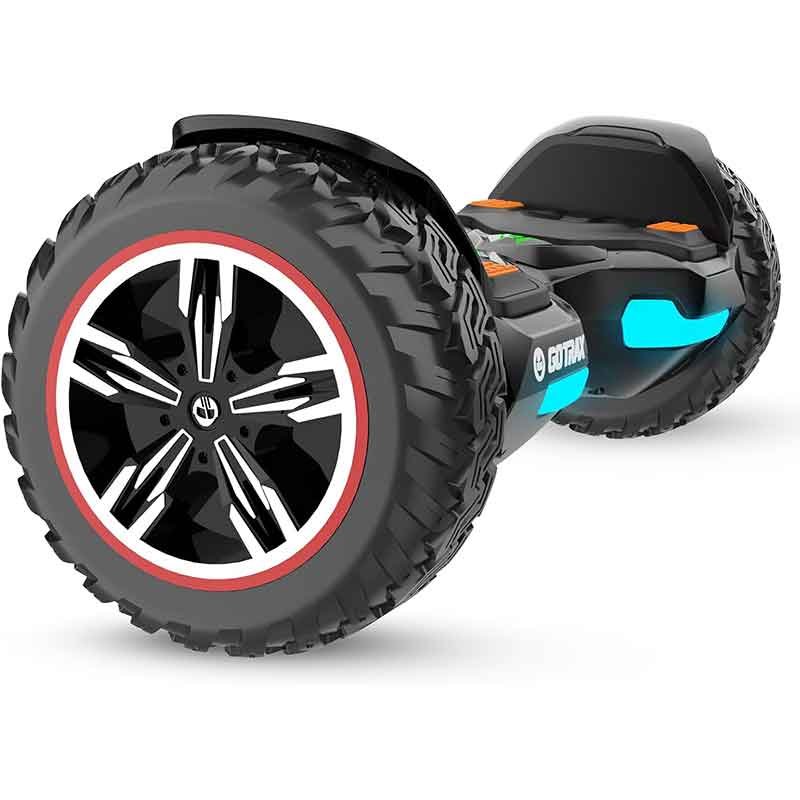
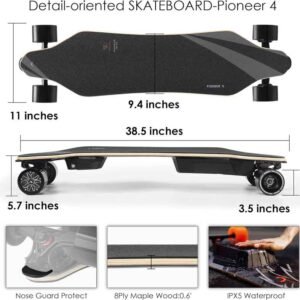
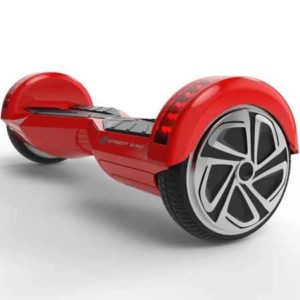

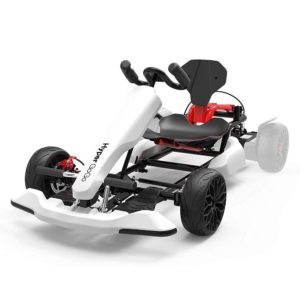
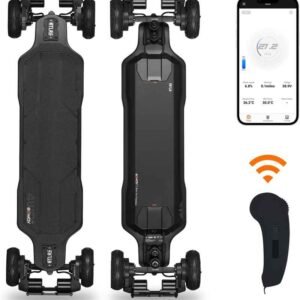
 H1 is powered by two 200W motors that enable it to climb 15 degree inclines and reach a 9 mph top speed. The 6.5″ solid wheels provide a smooth and enjoyable ride.
H1 is powered by two 200W motors that enable it to climb 15 degree inclines and reach a 9 mph top speed. The 6.5″ solid wheels provide a smooth and enjoyable ride.